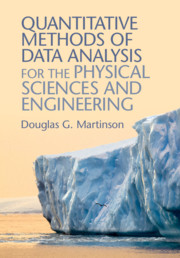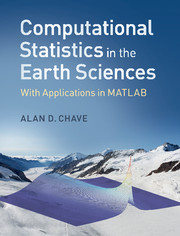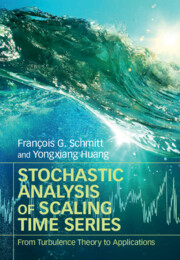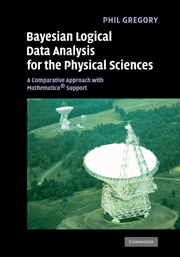Quantitative Methods of Data Analysis for the Physical Sciences and Engineering
This book provides thorough and comprehensive coverage of most of the new and important quantitative methods of data analysis for graduate students and practitioners. In recent years, data analysis methods have exploded alongside advanced computing power, and it is critical to understand such methods to get the most out of data, and to extract signal from noise. The book excels in explaining difficult concepts through simple explanations and detailed explanatory illustrations. Most unique is the focus on confidence limits for power spectra and their proper interpretation, something rare or completely missing in other books. Likewise, there is a thorough discussion of how to assess uncertainty via use of Expectancy, and the easy to apply and understand Bootstrap method. The book is written so that descriptions of each method are as self-contained as possible. Many examples are presented to clarify interpretations, as are user tips in highlighted boxes.
- Develops new, unfamiliar methods from basic principles
- Features detailed illustrations to clarify difficult concepts
- Self-contained chapters stand alone as individual resources
Reviews & endorsements
'This text is suitable for undergraduates and graduates, as well as seasoned scientists and engineers seeking to broaden their statistical skills. It will have lasting value as it is comprehensive, containing detailed explanations of a wide range of statistical methods. The book is clearly written by a meticulous scientist who is an expert in the field and an award winning teacher.' James Hays, Columbia University, New York
'At last: a guide for getting the most out of your data analysis while avoiding the many pitfalls, hazards and common mistakes. This book is an invaluable and inspired opus on the fundamentals of quantitative data analysis. It is both comprehensive and illuminating, with many a nugget of enlightened wisdom, as well as succinctly summarized 'take-home' points in each and every section. A very accessible must-have guide for exploring data in the most informed way, and a gem of a textbook for students, teachers and practitioners alike.' Sharon Stammerjohn, University of Colorado, Boulder
'Coherent book-length treatments are so valuable in the Data Age: the internet is full of algorithms - but described flatly, and in myriad notations and nomenclatures. This long-time teacher's lucid text expresses the spirit and strategy of data analysis, as well as the details. Boxes set off optional advanced derivations, appendices survey matrix algebra and uncertainty analysis, and the chapters aim for standalone readability, making this a valuable reference as well as a flexible textbook (with questions). Spectral estimation is especially well covered.' Brian Mapes, University of Miami
'This is a competent development of many data analysis methods … Overall, the book is the outgrowth of teaching the subject for 30 years, which shows in the well-developed, clear narrative descriptions accompanying the theory.' D. A. Vaccari, Choice
Product details
No date availableHardback
9781107029767
626 pages
253 × 178 × 33 mm
1.38kg
Table of Contents
- Part I. Fundamentals:
- 1. The nature of data and analysis
- 2. Probability theory
- 3. Statistics
- Part II. Fitting Curves to Data
- 4. Interpolation
- 5. Smoothed curve fitting
- 6. Special curve fitting
- Part III. Sequential Data Fundamentals:
- 7. Serial products
- 8. Fourier series
- 9. Fourier transform
- 10. Fourier sampling theory
- 11. Spectral analysis
- 12. Cross spectral analysis
- 13. Filtering and deconvolution
- 14. Linear parametric models
- 15. Empirical orthogonal function (EOF) analysis
- A1. Overview of matrix algebra
- A2. Uncertainty analysis
- References
- Index.









